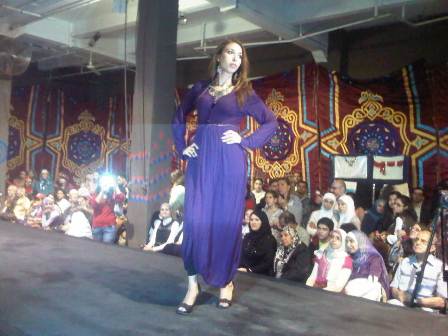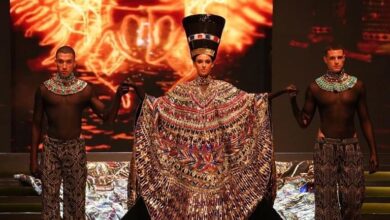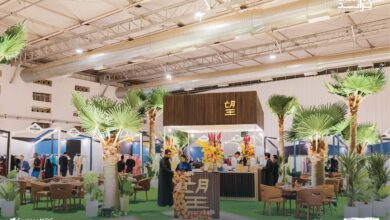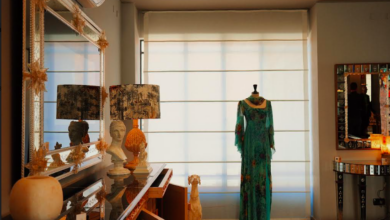
In collaboration with NGOs el-Takeiba and Jesuit Egypt, the Townhouse Gallery on Tuesday launched a fashion show entitled “My Dress is Egyptian” as part of the Being Egyptian festival. Despite good intentions, the event was weakened in part by incredibly poor planning and in large by what seemed to be a badly designed and tasteless exhibition.
This fashion show is a product of the "Egyptian designing" workshop where 11 trainees worked under the supervision of designer Eslam Hamed, a young designer who recently displayed his designs in a fashion event at Darb 1718 and taught a course on recycled fashion last year. The Being Egyptian festival also included a show of Sufi chanting and Christian Hymns, a Tanoura show, an exhibition of handmade jewelry and a photo exhibition all in the same space -Townhouse Factory – along with a man who sells hibiscus, liquorish, and Egyptian beverages.
The fashion show was divided into two parts; the first showcased the creations of outside designers, most likely students in the Faculty of Applied Arts. The second featured designs of workshop students such as Samem Bel Masry (Design in Egyptian).
The fashion show supposedly showcased oriental designs tailored for Egyptian women’s day to day activities. I’m not sure which Egyptian women were targeted and in what sort of daily activities they engaged, though I’m sure I wouldn’t wear these designs to do anything – except to go to bed, perhaps… I don’t know how long this “creative” fashion course was, but surely it wasn’t long enough to teach the students the meaning of the word wearable!
All designs are simply ugly, lack taste and are far from creative. The collection had little variety as most designs were dresses. No new ideas were invested in the show as most designs were mutilated replicas of high street fashion. And the color scheme was dull, dark and depressing. There was scant or no presence of print fabrics. It seems that most students were completely detached from the real world and unable to take their designs to the next level, which is compatibility with general taste, worldwide fashion trends and markets.
Some students used ethnic oriental fabrics but that attempt also crashed and burned as it was a complete imitation of the early designs of prominent designers like Amina K and al-Horreya. The fabrics used are jersé, satin, and cotton, among others.
The fashion show was a big mess; Townhouse failed to provide seating for all the attendees and kids were running all around the cat walk making it impossible for fashion editors and photographers to get a close glimpse of the designs.
Overall, the fashion course and the fashion show may be a step in the right direction but need strong guidance in terms of organization.




